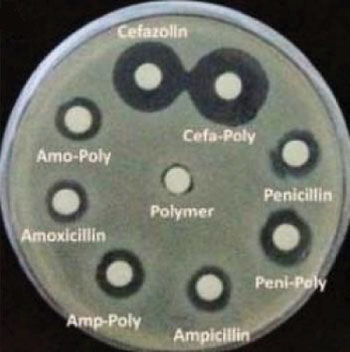New Approach Restores Effectiveness of Older Antibiotics
By LabMedica International staff writers
Posted on 30 Apr 2014
Methicillin-resistant Staphylococcus aureus (MRSA), a complex of multidrug-resistant Gram-positive bacterial strains, has proven especially problematic in both hospital and community settings.Posted on 30 Apr 2014
These bacteria have become drug resistant by deactivating conventional β-lactam antibiotics, including penicillins, cephalosporins, and carbapenems.

Image: Cultured bacteria showing increased sensitivity to antibiotics with the additional of a metallopolymer (Photo courtesy of University of South Carolina).
Microbiologists at the University of South Carolina (Columbia, SC, USA) introduced a class of charged metallopolymers that exhibit synergistic effects against MRSA by efficiently inhibiting activity of β-lactamase and effectively lysing bacterial cells.
The β-lactam structure in a molecule is something that many bacteria are adverse to. It greatly hinders their ability to reproduce by cell division, and so chemists have for years spent time making molecules that all contain the β-lactam structural motif. One of the most effective bacterial defenses is an enzyme called β-lactamase, which chews up the β-lactam structure. Some bacteria, such as MRSA, have developed the ability to biosynthesize and release β-lactamase when needed. It is a devastating defense because it is so general, targeting the common structural motif in all of the many β-lactam antibiotics.
The interdisciplinary team also showed that the antimicrobial effectiveness of the four β-lactams studied in detail was enhanced by the polymer. They prepared a cobaltocenium metallopolymer that greatly slowed the destructiveness of β-lactamase on a model β-lactam molecule (nitrocefin). The enhancement was modest against two strains, but very pronounced with the hospital-associated strain of MRSA (HA-MRSA). The four antibiotics penicillin-G, amoxicillin, ampicillin, and cefazolin, were protected from β-lactamase hydrolysis via the formation of unique ion-pairs between their carboxylate anions and cationic cobaltocenium moieties.
The study was published on March 17, 2014, in the Journal of the American Chemical Society.
Related Links:
University of South Carolina













